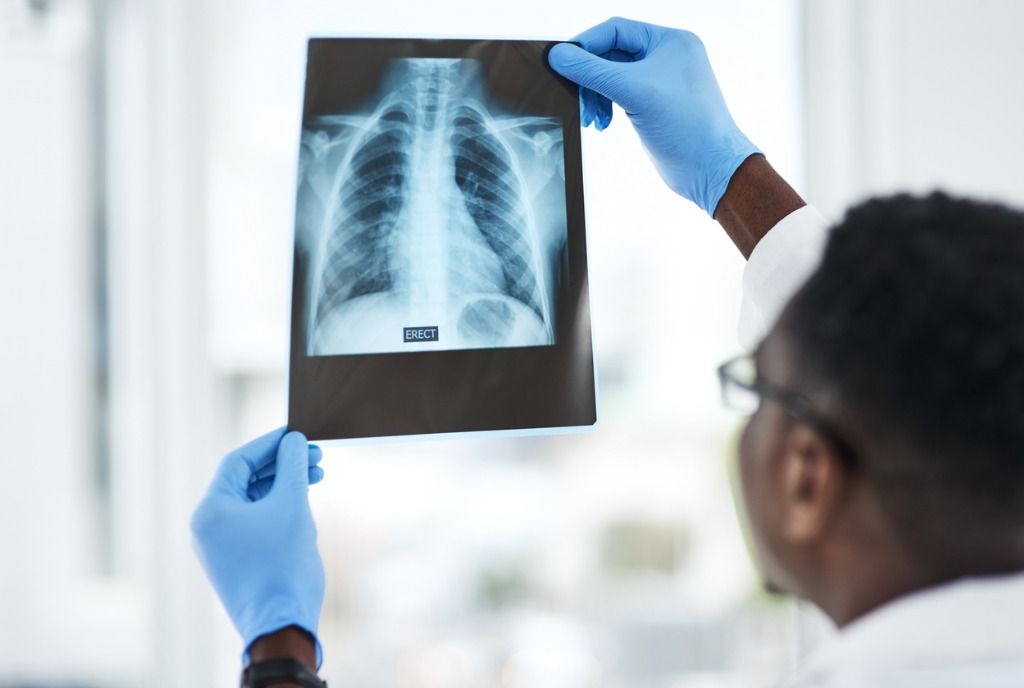Medications that provide a neuromuscular blockade (NMB) are routinely administered in major surgeries and procedures to facilitate airway intubation and maintain surgical status 1. Although reversal agents are generally successful at reversing neuromuscular blockade following surgery, a degree of residual NMB may persist in certain cases. The occurrence of postoperative pulmonary complications varies with age, surgery type, comorbidity, and general anesthesia, but incomplete NMB reversal (residual NMB) contributes to increased risk. Postoperative pulmonary complications include hypoxia, postoperative pneumonia, airway obstruction, atelectasis, and pulmonary infection 2. While estimated incidences range from 1-23%, postoperative pulmonary complications have been linked to higher short-term and long-term mortality rates in patients following major surgery 2,3. As such strategies to minimize this risk have been probed.
First, neuromuscular blocking agents must be properly dosed in order to minimize complications. Second, improvements in neuromuscular transmission monitoring and its interpretation may be required. As such, one study concluded that the proper use of neostigmine guided by neuromuscular transmission monitoring results may help reduce the incidence of postoperative respiratory complications 4.
A key factor leading to postoperative pulmonary complications is ostensibly residual NMB linked to NMB reversal agents. Traditionally, the acetylcholinesterase inhibitor neostigmine has been used to decrease the likelihood of postoperative pneumonia 5; however, its reversal of deep NMB tends to be inefficient. In this context, sugammadex, a novel cyclodextrin, the first in a new class of selective relaxant binding agents, has emerged as an important innovation and was approved by the Food and Drug Administration in 2015 6. In particular, sugammadex lowers the incidence of residual paralysis 7, incurs a more rapid and efficient reversal 8, and minimizes hospital readmissions 9.
Though a large, retrospective study did not find a difference in postoperative pulmonary complications related to neostigmine versus sugammadex10, the general consensus is that sugammadex is the superior NMB reversal agent overall. A 2021 meta-analysis of 14 randomized controlled trials was carried out to compare the incidence of postoperative pulmonary complications between patients who received sugammadex versus the traditionally used agent neostigmine. Compared with neostigmine, the use of sugammadex for NMB reversal was associated with a lower risk of postoperative pulmonary complications, mainly due to a lower incidence of postoperative respiratory failure 11. This may be attributed to the quicker and more complete NMB reversal achieved by sugammadex compared with neostigmine.
However, the study was limited by its lack of clinical homogeneity with regard to patient background, surgery type, and NMB reversal agent administration regimen. The influence of these factors on the effectiveness and optimal sugammadex administration protocol remain to be explored
The NMB reversal agent sugammadex, which is continuing to be assessed clinically, is very promising for its ability to reduce postoperative pulmonary complications 12. In the future, however, further investigations are required in order to fully validate rapidly emerging findings and develop proper, contextually appropriate usage guidelines. Additional assessments across risk subgroups for postoperative pulmonary complications and targeting the cost-effectiveness of the use of sugammadex are also warranted.
References
- Stäuble, C. G. & Blobner, M. The future of neuromuscular blocking agents. Current Opinion in Anaesthesiology (2020). doi:10.1097/ACO.0000000000000891
- Raval, A. D. et al. Epidemiology and outcomes of residual neuromuscular blockade: A systematic review of observational studies. Journal of Clinical Anesthesia (2020). doi:10.1016/j.jclinane.2020.109962
- Cammu, G. Residual Neuromuscular Blockade and Postoperative Pulmonary Complications: What Does the Recent Evidence Demonstrate? Current Anesthesiology Reports (2020). doi:10.1007/s40140-020-00388-4
- McLean, D. J. et al. Dose-dependent Association between Intermediate-acting Neuromuscular-blocking Agents and Postoperative Respiratory Complications. Anesthesiology (2015). doi:10.1097/ALN.0000000000000674
- Bulka, C. M. et al. Nondepolarizing Neuromuscular Blocking Agents, Reversal, and Risk of Postoperative Pneumonia. Anesthesiology (2016). doi:10.1097/ALN.0000000000001279
- Singh, D. et al. Sugammadex: A revolutionary drug in neuromuscular pharmacology. Anesth. Essays Res. (2013). doi:10.4103/0259-1162.123211
- Alday, E., Muñoz, M., Planas, A., Mata, E. & Alvarez, C. Effects of neuromuscular block reversal with sugammadex versus neostigmine on postoperative respiratory outcomes after major abdominal surgery: a randomized-controlled trial. Can. J. Anesth. (2019). doi:10.1007/s12630-019-01419-3
- Hristovska, A. M., Duch, P., Allingstrup, M. & Afshari, A. Efficacy and safety of sugammadex versus neostigmine in reversing neuromuscular blockade in adults. Cochrane Database of Systematic Reviews (2017). doi:10.1002/14651858.CD012763
- Togioka, B. M. et al. Randomised controlled trial of sugammadex or neostigmine for reversal of neuromuscular block on the incidence of pulmonary complications in older adults undergoing prolonged surgery. Br. J. Anaesth. (2020). doi:10.1016/j.bja.2020.01.016
- Li, G. et al. Postoperative Pulmonary Complications’ Association with Sugammadex versus Neostigmine: A Retrospective Registry Analysis. Anesthesiology (2021). doi:10.1097/ALN.0000000000003735
- Wang, J.-F., Zhao, Z.-Z., Jiang, Z.-Y., Liu, H.-X. & Deng, X.-M. Influence of sugammadex versus neostigmine for neuromuscular block reversal on the incidence of postoperative pulmonary complications: a meta-analysis of randomized controlled trials. Perioper. Med. 2021 101 10, 1–11 (2021).
- Shah, S. B., Chawla, R., Pahade, A. & EL-Molla, A. Neuromuscular blockers and their reversal: have we finally found the on-off switches? Ain-Shams J. Anesthesiol. (2021). doi:10.1186/s42077-021-00130-0
